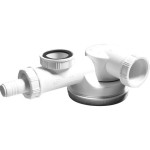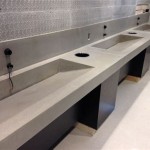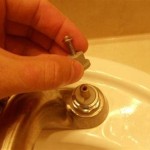Replacing Bathroom Faucet Taps: A Comprehensive Guide
Replacing bathroom faucet taps is a common home improvement project that can significantly enhance the aesthetic appeal and functionality of a bathroom. Whether upgrading to a more modern style, fixing a leaky faucet, or simply performing routine maintenance, understanding the process involved is crucial for a successful outcome. This article provides a detailed guide to replacing bathroom faucet taps, covering necessary tools, preparation steps, the replacement procedure itself, and essential post-installation checks.
Before embarking on this project, it’s important to ascertain the type of faucet to be replaced. Bathroom faucets generally fall into several categories, including center-set faucets (for sinks with three holes spaced 4 inches apart), widespread faucets (for sinks with three holes spaced further apart), single-hole faucets, and wall-mounted faucets. Each type requires slightly different installation techniques, so identifying the existing faucet configuration is the first step.
Gathering the Necessary Tools and Materials
A successful faucet replacement hinges on having the right tools and materials at hand. This prevents delays and ensures a professional-looking result. The following items are typically required:
New Faucet Set: Select a replacement faucet that is compatible with the existing sink configuration (number of holes and spacing). Consider factors such as style, finish, and water efficiency when making the selection.
Basin Wrench: This specialized wrench is designed to reach nuts and bolts in tight spaces under the sink, making it essential for loosening and tightening faucet hardware.
Adjustable Wrench: An adjustable wrench is versatile and useful for various plumbing connections and tightening procedures.
Pliers (Slip-Joint and Needle-Nose): Pliers are necessary for gripping and manipulating small parts and making minor adjustments.
Screwdrivers (Phillips and Flathead): Depending on the faucet design, both Phillips and flathead screwdrivers might be needed to remove or install various components.
Plumber’s Putty or Silicone Caulk: This is used to create a watertight seal between the faucet base and the sink surface.
Teflon Tape: Teflon tape is applied to threaded connections to prevent leaks. Ensure high-quality tape is used.
Bucket and Towels: These are essential for catching water and cleaning up any spills.
Work Light: Adequate lighting is crucial for working in the often dimly lit area under the sink.
Safety Glasses: Protecting the eyes from debris is always a priority when working with plumbing.
Gloves: Wearing gloves protects hands from dirt and potential exposure to bacteria.
Preparing for the Faucet Replacement
Proper preparation is a critical step that ensures a smooth and efficient faucet replacement. It minimizes potential problems and promotes safety.
Turn Off the Water Supply: Locate the shut-off valves under the sink. These valves control the hot and cold water supply to the faucet. Turn both valves clockwise until they are completely closed. If shut-off valves are not present, the main water supply to the house must be turned off. This is usually located in the basement or near the water meter.
Test the Water Supply: After turning off the water supply, turn on the existing faucet to release any remaining water pressure in the lines. This confirms that the water supply has been successfully shut off.
Disconnect the Water Supply Lines: Place a bucket under the sink to catch any residual water. Use a wrench to disconnect the supply lines from the faucet. Be prepared for a small amount of water to spill out. Inspect the supply lines for any signs of wear or corrosion. If necessary, replace them with new supply lines.
Disconnect the Drain Assembly (Optional): If the new faucet comes with a new drain assembly, it’s beneficial to replace the existing drain assembly as well. Disconnect the P-trap and drain tailpiece. This step is optional but recommended for a complete upgrade.
Remove the Old Faucet: Using a basin wrench, loosen the nuts that secure the old faucet to the sink. These nuts are typically located underneath the sink, directly beneath the faucet base. Once the nuts are loosened, carefully remove the old faucet from the sink. It may be necessary to use pliers or a screwdriver to detach any remaining connections.
Clean the Sink Surface: After removing the old faucet, thoroughly clean the sink surface around the faucet holes. Remove any old plumber’s putty or caulk. Use a scraper or putty knife to remove stubborn residue. Ensure the surface is clean and dry before installing the new faucet.
Installing the New Faucet
The installation process requires careful attention to detail to ensure a watertight and secure fit. Follow the manufacturer's instructions provided with the new faucet, as specific steps may vary depending on the model.
Install the Faucet Spout: Insert the new faucet spout into the designated hole in the sink. Apply a bead of plumber’s putty or silicone caulk around the base of the spout where it contacts the sink surface. This creates a watertight seal. From underneath the sink, attach the mounting hardware (washers and nuts) to secure the spout in place. Tighten the nuts with a basin wrench, ensuring the spout is firmly attached to the sink.
Attach the Water Supply Lines: Connect the new water supply lines to the faucet. Wrap Teflon tape around the threads of the faucet inlets before connecting the supply lines. Tighten the connections with an adjustable wrench, avoiding over-tightening, which can damage the threads.
Install the Drain Assembly (If Replacing): If replacing the drain assembly, install the new drain flange into the sink drain opening. Apply a bead of plumber’s putty or silicone caulk around the flange to create a watertight seal. From underneath the sink, attach the drain tailpiece and P-trap to the drain flange. Ensure all connections are tight and secure.
Connect the Lift Rod (If Applicable): If the faucet includes a lift rod for operating the drain stopper, connect the lift rod to the drain linkage mechanism. This usually involves inserting the lift rod into a hole in the faucet body and attaching it to the linkage with a screw or clip. Adjust the linkage so that the drain stopper operates smoothly and efficiently.
Check for Leaks: After completing the installation, turn the water supply back on slowly. Check all connections (supply lines, drain assembly, faucet base) for leaks. If any leaks are detected, tighten the connections further or reapply Teflon tape or plumber’s putty as needed.
Test the Faucet Operation: Turn the faucet on and off to ensure proper water flow and temperature control. Check the drain stopper to ensure it opens and closes properly. Make any necessary adjustments to the lift rod linkage.
Clean Up: Remove any tools, materials, and debris from the work area. Wipe down the sink and faucet with a clean cloth. Dispose of any old faucet parts and packaging materials properly.
Replacing bathroom faucet taps is a manageable DIY project as long as meticulous attention is paid to each step and safety considerations are observed. Following this guide will help ensure a successful installation and a functional, aesthetically pleasing bathroom faucet.

How To Install A Bathroom Faucet The Home Depot

Diy How To Replace And Install A Bathroom Sink Faucet

How To Replace A Bathroom Faucet Home Repair Tutor

How To Install A Bathroom Faucet The Home Depot

How To Replace A Bathroom Faucet Removal And Installation

Replacing A Bathroom Faucet Fine Homebuilding

How To Replace Install Bathroom Sink Faucets Easy Diy Home Upgrade

How To Remove Bathroom Faucet Easy Simple

Removing And Installing Bathroom Faucets The Lazy Way Makely

Fix A Leaky Bathroom Faucet Replace Cartridge Quick Easy Home Repair
Related Posts







